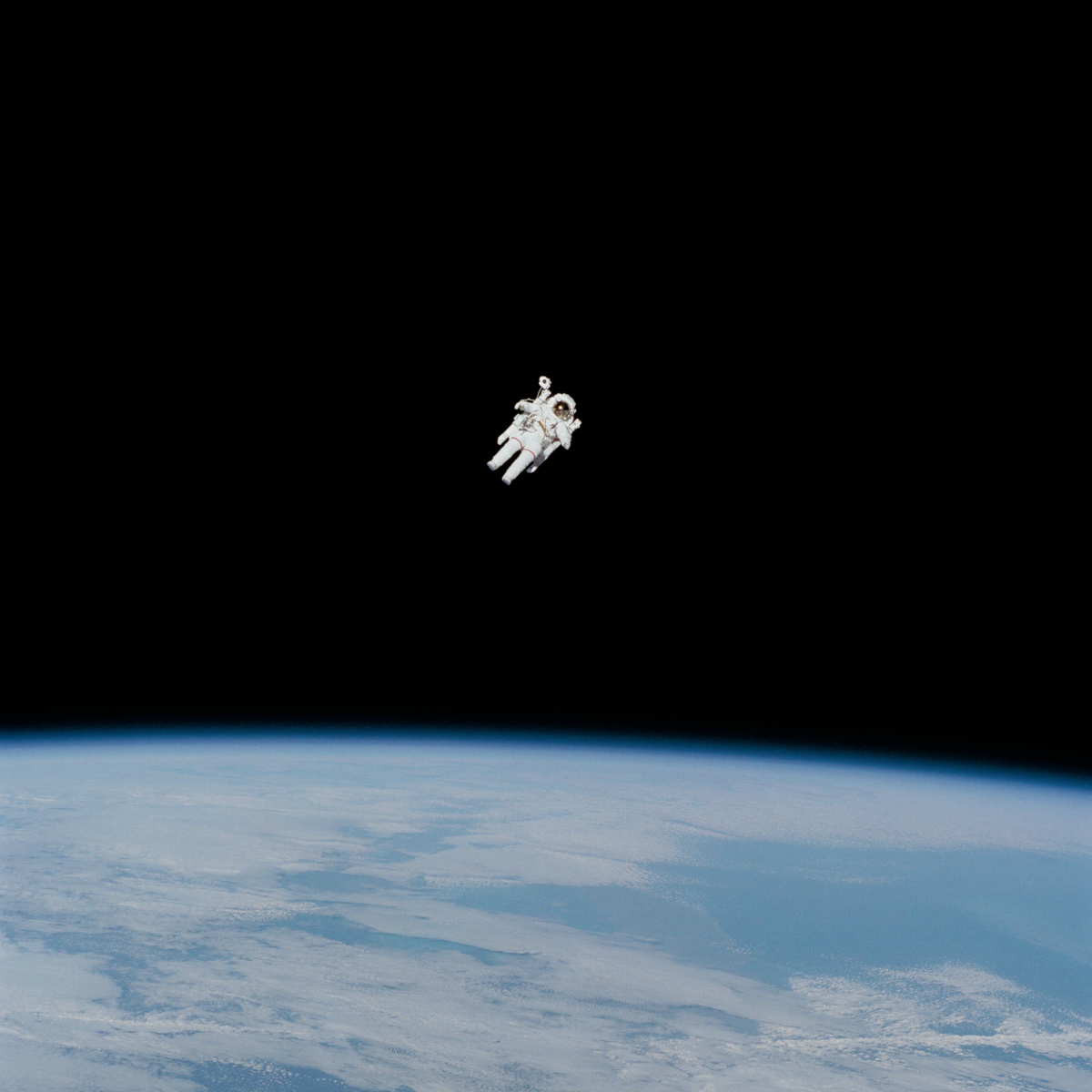
The First Untethered Spacewalk
On 20 February 1984, astronaut Hoot Gibson peered out of Challenger at something rare and sensational. He grabbed a camera, took a light meter reading three times, checked the focus four times, and snapped one of the starkest, most indelible images in the history of photography.
Bruce McCandless II floated 300 feet away, blanketed in black, hovering above a crescented blue slab. The astronaut had just uttered, “It may have been one small step for Neil, but it’s a heck of a big leap for me.”

McCandless was in the midst of the first untethered spacewalk.
The photo is a masterpiece for a slew of reasons. As a picture, it’s gorgeously framed. It’s simultaneously lean and complex; just three ingredients fill the scaffolding – astronaut, Earth, and space – yet it contains multitudes – the apex of human achievement and technology, the excitement of the frontier, the infinite depths of the cosmos. Despite the seeming buoyancy of McCandless, the composition evokes palpable vertigo, a sense of falling into the void with no harness and rope. Just the length of one American football field away, McCandless already appears to be a figurine, receding into a neverending blackness. Knowing the scale of the image drives home the vastness of the universe. We are miniature beings in a realm we cannot comprehend; our annihilation would mean nothing to something so large. Yet, the Earth seems to glow, which should fill the viewer with gratitude for a home so inviting in a sea of harshness.
Despite the ubiquity of untethered space walks in science fiction, all previous forays outside space shuttles left the astronauts tied to the ship in case something should go awry.
Extravehicular activity (EVA) – aka spacewalking – debuted in the 1960s, first by the Soviets, then by Americans during the Gemini missions. Even with tethering, the process proved arduous for the fledgling space programs. During early EVAs, astronauts could not do much of anything without tiring themselves completely. Not until the final Gemini mission did NASA hit upon a winning strategy, coupling handholds, footholds, and underwater training.
Apollo and Skylab missions did not require self-maneuvering EVAs, so the practice fell out of use. When the space shuttles arrived, the potential for untethered spacewalking returned to the forefront. To test the ability to leave the craft untethered, NASA developed the Manned Maneuvering Unit. This 326-pound backpack contained 24 nozzle thrusters that spewed nitrogen. Bruce McCandless used controllers at his hands to manipulate roll, pitch, yaw, acceleration, and directional movement. The unit held about six hours’ worth of nitrogen.
When McCandless took the first test drive, all that stood between a malfunction and him floating forever into space was a second MMU on Challenger. If that unit failed, he likely would have perished in his suit.


Fortunately, McCandless did not need to fight a rogue artificial intelligence, such as HAL 9000, and the unit performed flawlessly. Later during STS-41-B, Robert Stewart took the unit for a spin, proving it was up to untethered spacewalking.
Despite this breakthrough in spacefaring, EVAs without a lariat did not become the norm. In fact, only seven untethered walks have ever occurred, all in 1984. The next two shuttle missions utilized the MMU to work on satellites. Demonstrating the laws of physics in space, astronauts used the unit to capture massive satellites that did not reach proper orbit, to move them to the shuttle, and to take them back to Earth.
Challenger exploded just under two years after the initial EVA tests. Following a safety review of the entire space shuttle mission, officials deemed untethered walks too perilous. Since then, tethered EVAs and lengthy mechanical arms have performed every needed task.


The knowledge and technology did not become a complete waste, at least. Since the 1990s, astronauts on EVAs wear SAFER, or the Simplified Aid For EVA Rescue. This unit is a smaller version of the MMU, though it is designed only for emergencies. To date, no astronaut has needed to use SAFER.
The courage required to step outside a spacecraft must be enormous, even if tethered and even with a back-up propulsion unit. It’s fitting that McCandless quoted Neil Armstrong during the first test of the MMU, as his intrepidity can be matched only by a select few wayfarers throughout the millennia. To step away from the tenuous safety of a ship and to put your faith in spurting nitrogen demands the nerves of meteorites.
Further Reading and Exploration
Astronaut Bruce McCandless Performs the First Untethered Spacewalk – NASA
The Iconic Photos from STS-41B: Documenting the First Untethered Spacewalk – NASA
“More Favored than the Birds”: The Manned Maneuvering Unit in Space – NASA
Manned Maneuvering Unit – Smithsonian National Air and Space Museum













